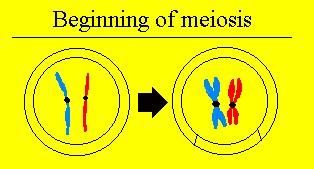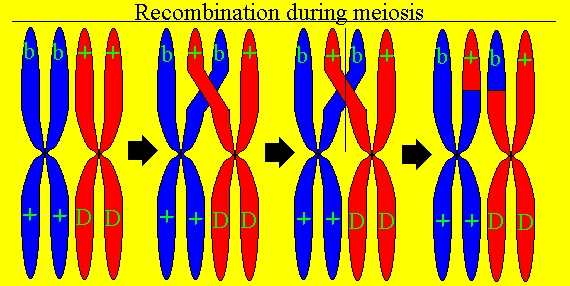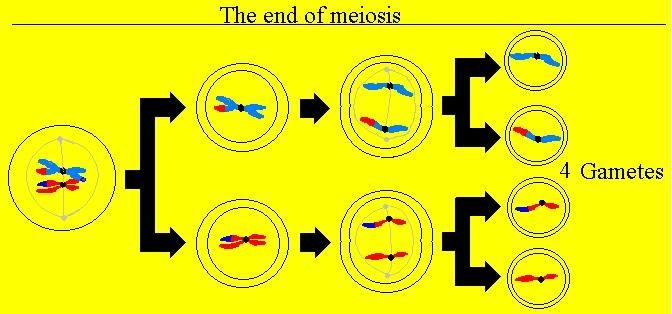Example 4: Recombination intermezzo
 |
What kind of gametes will this darkgreen/blue type II produce?
Since both genes lie on the same chromosome, you would expect from the explenation on meiosis that both genes stay linked:
darkgreen/blue type II = bl+ D/bl D+ produces the gametes:
| bl+ D |
| bl D+ |
What is this recombination or crossing-over as it is often called among budgerigar breeders?
It all has to do with meiosis.
When recombination occurs, meiosis starts of as usual (only one chromosome pair is drawn for simplicity), the chromosomes are doubled:



| bl+ D+ |
| bl D |
| 85% | 42.5% | bl+ D |
| 42.5% | bl D+ | |
| 15% | 7.5% | bl+ D+ |
| 7.5% | bl D |
Recombination, just a fluke of nature?
It is such a very complex and therefore highly regulated process.
The smallest error during the exchage can lead to very serious defects in the chromosomes and the zygote.
Recombination is not an accident, but a highly regulated process which allows more variation.
Variation is the engine of evolution and selection (Darwin already knew this).
Scientist believe that during each meiosis almost all chromosome pairs go though recombination.
Furthermore, they have reason to believe that mostly recombination only occurs once for each pair of homologous strands.
The place where recombination takes place determins if two genes are seperated and reunited with the alternetive allele of the other gene.
The further away two genes are on a chromosome, the higher the chance of recombination, and hence the higher the recombination frequency will be (I'm working on a part about LOD-scores & genetic maps that will go deeper into it)
Let's put an end to this theory and let us continue with pairings here!
 |
http://
